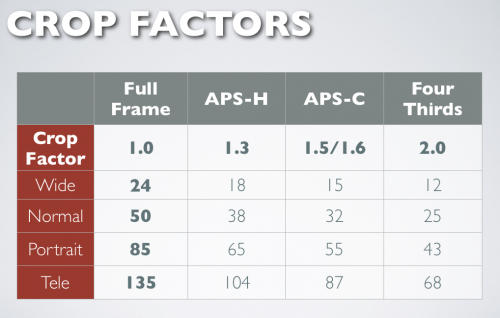Cameras used to have a negative-sized negative (duh). That is what we call “standard size”. (It is 24×36 mm, if you are interested).
But many digital cameras, especially cheaper models, have a slightly smaller sensor than that. We call this a “crop factor” sensor. These can be 1.5 times smaller than a negative (some Nikon models), or 1.6 times smaller (some Canon models), and so on.
So let’s work though this to see how it works.
First, using, say, a 24 mm wide angle lens, take a photo on a “full frame camera” (a film camera, or an expensive DSLR like a Canon 5D) and you get picture 1:

Now put the very same lens on “crop factor camera” and take the very same picture from the very same vantage point. Same lens. Smaller sensor. So because of this smaller sensor, only the central part of the lens is actually used, and you now get picture two:

The lens is the same, but the sensor is smaller, so a smaller part of the lens is actually used.
Finally, if I now print or display that “crop” picture at the same size as picture one (after all, it probably has the same number of pixels), I get picture three:

And that looks just like a picture I would take with a 36 mm lens on a full-frame camera! See how the objects are larger?
That is why we say that a crop camera “appears to make your lenses longer”. So a 50mm lens on a full-frame camera, when used on a Canon Digital Rebel (crop factor 1.6) works like an 80mm lens on a full-frame camera. It has, as we say, “an effective length of 50×1.6 = 80mm”. There are other subtleties, but basically, that’s all.
This is excellent news if you like long lenses (your 200mm lens is now, free of charge, a 300mm lens). It is perhaps not quite such great news if you like very wide angle lenses: your 35mm lens works more like a 50mm lens (35mm x 1.6) would work on a full-frame camera. So to get what we used to get on a 16mm lens, you would need a 10mm lens.






